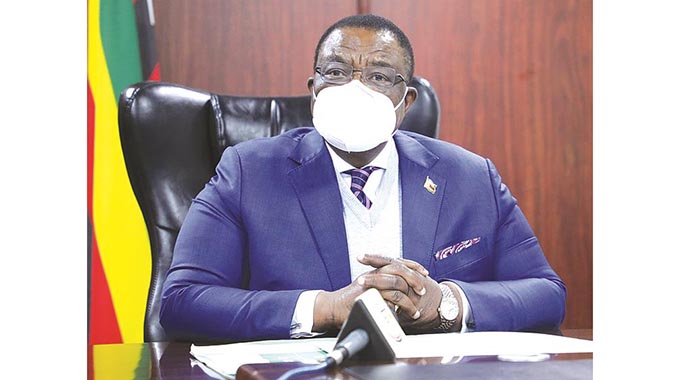Target to end HIV within reach: VP

Walter Nyamukondiwa and Conrad Mupesa
Zimbabwe has reached new milestones in its HIV interventions, reducing prevalence to 11,8 percent, cutting new infections and on course to meet the 95-95-95 targets by 2025, Vice President Constantino Chiwenga has said.
VP Chiwenga, who is also the Minister Health and Child Care, said Zimbabwe’s HIV delivery system had significantly recovered after lockdown-induced disruptions.
Dr Chiwenga said this in a speech read on his behalf by his deputy Dr John Mangwiro, during this year’s World Aids Day commemorations in Chinhoyi.
The commemorations ran under the theme, “End Pandemics, End Inequalities, End Aids”.
His remarks come as the country recently met the 90-90-90 targets, which seek to ensure that 90 percent of people living with HIV know their status, 90 percent who are HIV positive are on anti-retroviral treatment and 90 percent on treatment are achieving viral suppression.
VP Chiwenga said Zimbabwe was on course to eliminate the epidemic through increased treatment coverage and other interventions.
“Despite the Covid-19-induced disruptions to HIV service delivery in 2020, our response to HIV has now rebounded and continued to firm,” he said.
“I am very pleased with the trajectory of new HIV infections, which shows a continued decline for all age groups over the years, from 40 900 to 24 900 between 2016 and 2020.”
At least 1,3 million people are living with HIV, with 91 percent of them now on ARVs, up from 88 percent in 2015.
VP Chiwenga said while Zimbabwe was dealing with the Covid-19 pandemic, attention had not been lost on the HIV pandemic and other non-communicable diseases.
To avoid shocks on the health delivery system experienced with the onset of Covid-19 pandemic, Government was now prioritising revamping the entire health system, said VP Chiwenga.
“The Covid-19 pandemic exposed the health delivery system and as Government we are prioritising the whole health delivery system for revamping so that we can better deal with future pandemics.”
“In this regard, my ministry is spearheading the construction of 32 new hospitals, refurbishing and equipping old ones to ensure that all people have access to modern health care services and remove all inequalities in the provision of health care,” he said.
New HIV infections have declined by 42,1 percent among adults and 22, 4 percent among children.
Full story on www.herald.co.zw
Among the 10-19-year age group, infections declined by 44,3 percent and by 44,4 percent among the 15-24-year age group.
VP Chiwenga said in addition to the declines, the national HIV prevalence has dropped from 13,9 percent to 11,8 percent.
The decline, he said, showed that the HIV prevention interventions were bearing fruit and there was need to scale up targeted HIV testing, voluntary medical male circumcision, pre-exposure prophylaxis, post exposure prophylaxis, prevention of mother to child transmission, treatment, prevention and others, utilising the differentiated service delivery approaches.
While all indicators on HIV showed a downward trajectory, VP Chiwenga said there was need to optimise interventions in key populations such as sex workers, adolescent girls and young women and other key populations.
These have been found to account for more new HIV infections while effort should also be made to address structural service delivery challenges hindering access to services.
Government has adopted a public health approach to eliminate inequalities in access to health.
Through robust decentralised national ART programme, which has been enhanced by high retention, 90,3 percent of people on treatment are virally suppressed and are living longer with HIV and contributing to community and national development.
The Global AIDS Monitoring Report has confirmed that Zimbabwe achieved the UN 90-90-90 Fast Track targets, and moving closer to ending the Aids pandemic by 2030.
People are living longer and healthy lives with increased treatment, but there has also been an increased burden of non-communicable diseases such as cancer, diabetes, kidney and heart ailments, among others.
In the 2022 Budget, the Ministry of Health got an allocation of $117,7 billion, as part of efforts to ensure good healthcare provision.
National Aids Council CEO Dr Bernard Madzima said the budget allocation would oil the drive to eradicate AIDS by 2030.
“The funding gap continues to widen but we are happy about the domestic funding and announcements of the increased budget allocation coming to the Health Ministry of Health and Child Care,” he said.
In his remarks American Embassy acting Deputy Chief of Mission, Mr Art Brown said the US approved at least US$213 million to strengthen the health system and expand capacity for the prevention and control of HIV in Zimbabwe.
UN resident coordinator, Dr Alex Gasasira lauded Zimbabwe’s progress towards drastically reducing deaths related to Aids.
Mashonaland West Minister of State for Provincial Affairs and Devolution Mary Mliswa-Chikoka said the province had recorded great strides in availing medication to people living with HIV and Aids in the province.
At least 97 percent of HIV positive adults are on ART, while concerted efforts are in place to boost the figure of children on therapy which hovers slightly above 67 percent in a province ranked second-last in the country.









Comments